Wildness
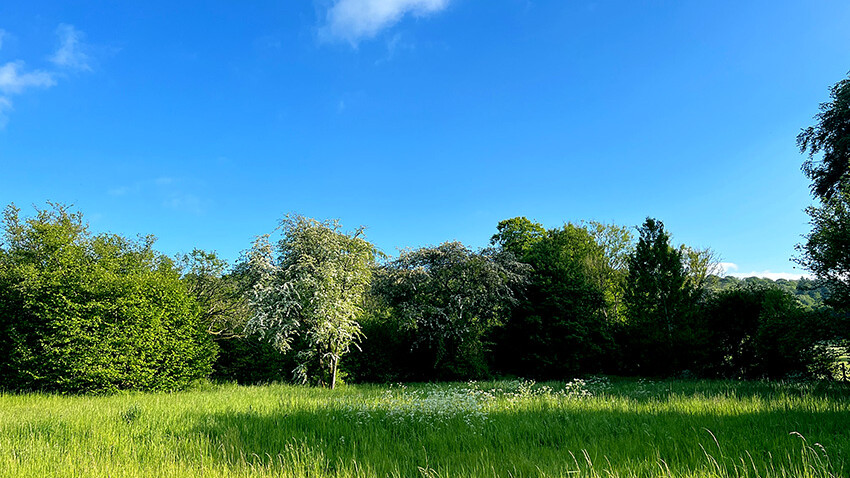
Wildness
 A flattish, hazel framed “wild” garden lies beside the lower left hand corner of the wildflower meadow. At this time of year a winding mown path leads into it, flanked by tall grasses and low shrubs. It is “wild” partly because we have not yet worked out a plan for this area but also because, luckily, fashion has caught up with us and although it has been so named for the last 15 years, today a wild garden is a rather modish thing to have.
A flattish, hazel framed “wild” garden lies beside the lower left hand corner of the wildflower meadow. At this time of year a winding mown path leads into it, flanked by tall grasses and low shrubs. It is “wild” partly because we have not yet worked out a plan for this area but also because, luckily, fashion has caught up with us and although it has been so named for the last 15 years, today a wild garden is a rather modish thing to have.
When Geordie and I first began to contemplate what a stately home was and how to encourage visitors both to come here and fall in love with it, we realised we needed gardens: that we should both re-discover and reveal the old gardens and walks and make some new ones.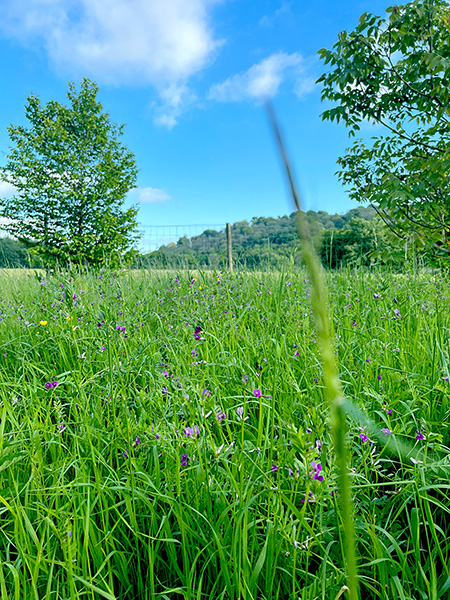
The constant changes in fashion over the centuries followed by the enormous loss of available manpower following the First World War and the sheer economics of employing so many gardeners meant that most of Highclere’s original gardens had all but disappeared. It was a research project in books, papers, maps and on foot. Where had others walked, what had they created and what had given our predecessors joy when they ventured outside during the various seasons.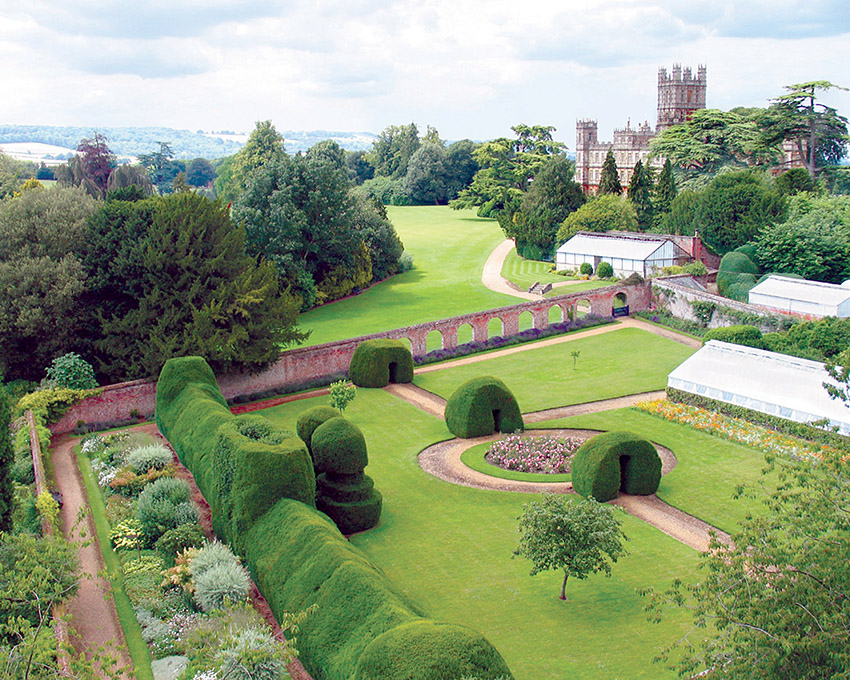
For my part, I have found it a truly wonderful journey, and one that continues every day. From highlighting an 18th century woodland garden (perhaps the hand of Steven Switzer) to unwrapping from mountains of brambles the azalea “American Garde” from 1820, or maintaining the 1000 year old Monk’s Garden, it has led to hundreds of thousands of bulbs and the delight of planting shrubs and trees according to what money we could allocate. It has been and continues to be a complete joy to plant, to lead the eye and the walker through to views and to ask them to wonder what lies around a corner or what comes next. It is never ending.
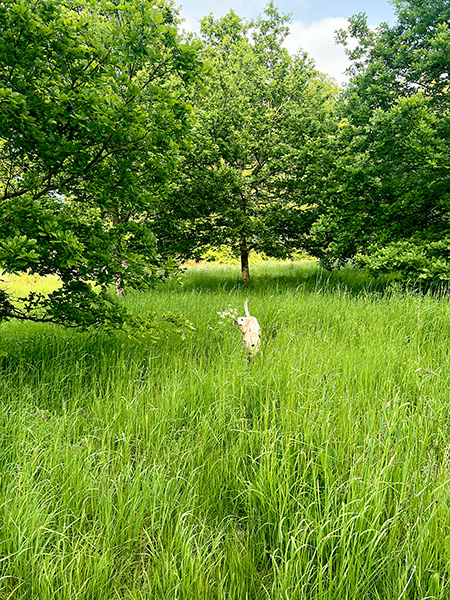 When we began, we had two gardeners, Don and Philip with some small manageable borders. These began to grow into spaces of a further 20 acres and then another 20 acres and so on… so it clearly had to be as low maintenance as possible.
When we began, we had two gardeners, Don and Philip with some small manageable borders. These began to grow into spaces of a further 20 acres and then another 20 acres and so on… so it clearly had to be as low maintenance as possible.
However, despite only mowing where people walk and the lawns around the castle, even this gardening model was not sustainable.
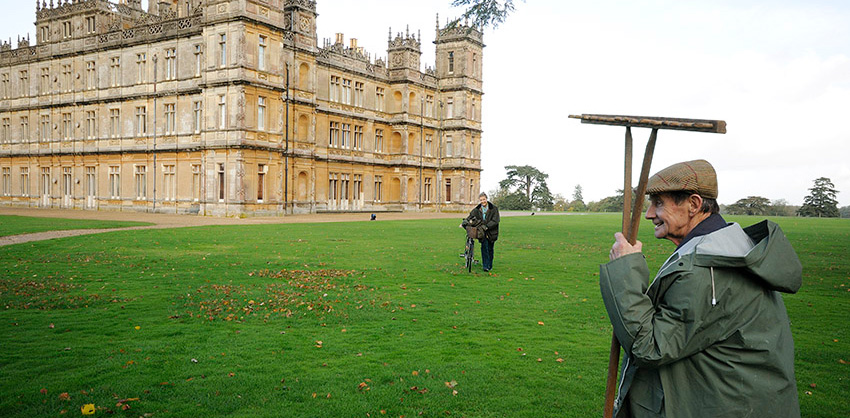
As Don wished to retire and continue to work just part time (he never wanted to retire entirely) we found a new head Gardener: Paul. Paul was very kind to Don and would collect him to bring him up to sit in the green houses as his health waned. He had been here for 42 years and knew so much. I loved his stories. Don also always said whatever I proposed would never work which I assume was because then he could argue himself out of doing something. He is now looking down on us and probably still holding strong views.
Meanwhile, we have expanded to a team of four working under Paul’s direction. Whilst there are herbaceous borders in the Secret Garden, Monk’s Garden, White Garden, Rose Arbour and Jeanie’s Garden, much of the gardens are “wild”. Wild never exactly means un-curated but they are not manicured.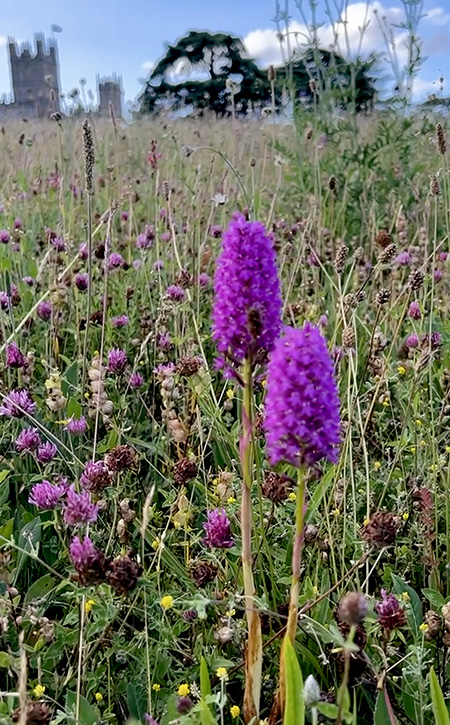
It has been a revelation as the removal of the closely planted dark softwoods now some 18 years ago has led to the re-emergence of bee orchids and a strengthening diversity of natural chalk downland wildflowers. Time and thyme ..
Around the Rose Arbour which connects the “Wild Garden” to the Six Sisters Walk it is full of nettles and other weeds. Again we do not have the manpower or desire to mow and manage but I have planted five orchards trees off to one side. Thus it all encourages as much insect and bird wild life as possible which then helps keep rose problems at bay. 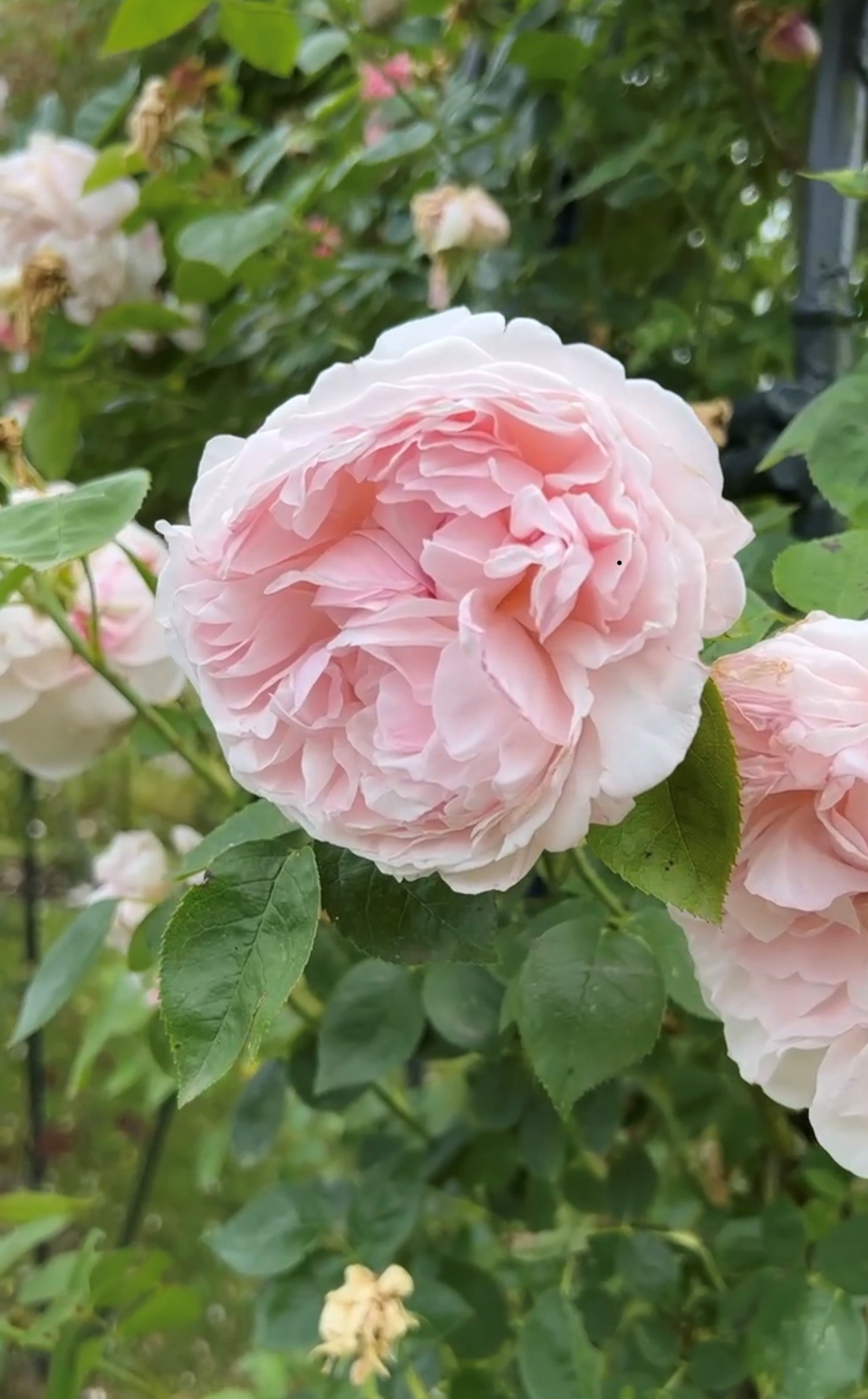 I am not sure of the science behind it all but from observing the health of the roses, it all seems to work and to contribute to the delight and beauty.
I am not sure of the science behind it all but from observing the health of the roses, it all seems to work and to contribute to the delight and beauty.
Just at the back in the “Wild Garden” is a spindly tree against which some years ago I decided to plant some roses. I then completely forgot about them but, despite no care whatsoever, they have managed to scramble toward the skies and then shower down in a way which is just so beautiful I feel lucky to be looking at the show. Nature does indeed always find a way.
32 Comments
So beautiful. Nature on its own and with a little bit of help can be such a joy to behold and a gift to appreciate. The UK is very fortunate. Sadly such wafting grasses and flowered meadows are becoming a dangerous place for North Americans with the advent of disease bearing ticks as they creep further and further north.
Lovely the pictures of wildness and you and lord Carnarvon have a lovely weekend the weather was beautiful sunny and lam fan of Downton Abbey and lovely to visit highcelere castle
Lady Carnarvon,
I was so pleased to see the sky view of Highclere Castle’s landscape and gorgeous hedges from the greenhouse side of your world. The story of the wild roses is perfect!
Thank you for this lovely story of how Don and others have helped nature.
Martha G.
Beautifully written. You, my dear, have good dirt (eh em, I mean good soil!). As a master gardener I struggle daily to keep my own gardens at bay and unfortunately have absolutely no green thumb when it comes to roses. To have such beautiful roses with little or no care is to me shows us how God works miracles! I always love to see wild gardens left to their own accord (and God) to fill and grow. I always love seeing your pictures of the landscapes and how they vary in each area. Wish I had such great soil and good help! Have a great week!
Lovely the pictures of wildness and lovely flowers out in the garden and lovely to visit highcelere castle
Thank you!
Beautiful, beautiful, beautiful!
What a lovely reading to view beginning our Monday morning!
Yea you and Lord Carnarvon for your interests in Gardens as when we visitors do come to tour and walk through Highclere Castle and its grounds it is such a wonderful visual experience inside and outside especally during spring, summer and fall!
Thank you for another lovely Monday morning blog.
Good luck keeping your gardens going and enjoying them.
I just love gardening and garden making..
Lovely the pictures of wildness and did you and lord Carnarvon have a lovely weekend and the weather was beautiful and sunny and lovely to visit highcelere castle and lam of Downton Abbey
Thank you, Lady Carnarvon for your wildness blog today. Your gardens, even though they might have some wild aspects to them, nature does find a way to make them beautiful. Spring must be such a wonder at Highclere with the beauty of nature and the all the baby animals. You are so fortunate to live in the middle of it all.
You are kind- Spring is most definitely a beautiful time to be in the gardens. I am always grateful.
Beautifully written and such serene pictures are just breathtaking. Nature indeed finds a way. I love the name Wild Garden and shall look forward to coming back, seeing through time the changes you shall make. Walking through trail, paths of nature, hearing and seeing wildlife is such a soothing comfort to one's soul.
Indeed she does. What a pleasure it is to read your blog. And about gardening too! Whether a violet on a windowsill or a wild garden on an estate, all souls benefit from gardening. I so look forward to listening to you in person in December next to your Christmas tree. How fun to have discovered that azalea. I discovered a healthy Douglas fir (4+') hidden inside one of our azaleas. He has a future home this fall. :)
Beautifully put
Gardening is such an adventure,what will grow and thrive,what won't,surprises abound.
My 21-year old daughter and I recently enjoyed an afternoon at Highclere. As we were leaving we stopped to visit the lambs on the left side of the driveway. We saw you and your husband approaching in your car and wanted to chat for a minute, but instead we smiled and waved.
Anyway, we loved the castle tour, the tea, and especially the beautiful grounds and gardens. The only problem was the afternoon slipped by too quickly! How fortunate I felt to experience such a lovely place with my precious daughter. Thank you for taking wonderful care of such a special place!
It’s all so beautiful! I love those pretty pink roses, my favorite flower. You are truly blessed to have such a wonderful expanse of land that can embrace the beauty and bounty of nature.
Gardening- nothing better!
Dear Lady Carnarvon,
I have been reading your weekly post since last year. I have learned so much. Today I realize how hard you and Lord Carnarvon work to keep the Highclere Estate naturally beautiful. I will probably never be able to visit Highclere but you have provided me with an idea of how beautiful it is and I thank you for this. The pictures above take me to an exceptional and peaceful place. Thank you so much. Take care.
Susan
Thank you -
A wild garden is so important these days when we see fewer insects and birds. I am in my 80s and I still remember as a child lying on our lawn hunting for four leaf clover‘s, or whistle grass, and watching butterflies flit about the garden, and in the evenings gathering with the neighborhood, children to catch fire flies, which were very abundant.
A yellow monarch butterfly has been visiting my peony garden. It is wonderful to see it, but sad that one butterfly can become an event best wishes for success in your gardening it does bring pleasure to so many of us.
So sweet that you mentioned Don’s “whispering” to you since I have someone whose criticism is still heard decades after their passing and sometimes, I heed their advice.
Loved our picnic box after seeing the gardens on May 1st before the house tour. It really is a cozy, charming home you have created.
Left a 21-page book about Edward de Vere for you at the gift shop after purchasing “Seasons at Highclere” - it really is fabulous.
Thank you - Don was unique!!
Lady Carnarvon,
Your post is perfect for my Moday morning.
Your gardens are soothing to my soul. My own woodsy
Acres is wild and hostas grow around my house. Bleeding
Hearts too. We battle the deer and a bear or two along with the
Other critters. So...wild garden is the way we go.
Body. Soul. Spirit. All three taking saturated pleasure in these images of wildlife beauty and the gardening descriptions.
May I know, please, the name of the tiny white flowers along the path? At first glance, I thought that they might be Queen Anne's Lace, but when I enlarged the photo, I could see that they were not. I cannot find a match for them in my Internet search.
Also, are the roses the tiny 1-inch ones or lushly lovely larger ones? Will you let us see them climbing? That must be lovely to behold!
Remembering the pleasures of walking through acres of wildflowers during spring and summer visits to my maternal grandparents . . . .
Thank you for sharing!
It is indeed Queen Anne's Lace
Thank you for this. Your work to recreate the past and at the same time create a wildlife haven is exemplary! I know from your husband that you have a PlantLife project and when I learned that, I joined as a Life Member. It is through such charities and through the enthusiasm of wildflower fans like you that we can beautify the British countryside again.
Dear Lady Carnarvon:
I was privileged to be able to visit your lovely home and gardens several years ago. Your dedicated work is an honor to those have gone before and much appreciated by who are able to soothe our souls while walking through the gardens!
Such a beautiful garden we really enjoyed walking around when we visited in May. I hope your puppies are doing well and not causing too much damage.
Thank you for the lovely Lady Almina book which we found on our seats on our coach. Such a delightful lady.
Best wishes to everyone at Highclere.
Sandria Maddocks
Almina was amazing - doing so much for others..
Lucky me; I will be delighting in your wonderfully scented gardens and your beautiful home this Wednesday afternoon. I’ve enjoyed reading your blog leading up to my visit. Thank you
Hope to see you on Wednesday
I arrived in Southampton this morning and will be blessed with a visit to Highclere tomorrow. It is exciting that it's such a lovely time of year for the grounds.
I hope that Stella and the puppies are doing well.
Best Regards,
Sibyl
thank you they are very mobile now!!!
When I visited Highclere, I fell in love with your gardens...but it was inevitable , you know. I adore Highclere's Nature, my envy is through the roof!
Moreover we've appreciated Paul's talent at the Book Club!
Thank you !
Our garden is only a patch really,however I planted a rose called you're beautiful in memory of my westie who had passed away.Also planted the rose Lichfield Angel,commemorating a picture of an Angel found under the alter of Lichfield cathedral and is very ancient .
Apart from a quick chop with a pair of shears they were neglected but this year they are abundant and a joy to behind.
Enjoy your roses everyone.
How lovely
Lady Carnarvon,
Thank you for sharing your 'Wildness' parts of your garden. I agree, 'wild' never exactly means un-curated. Are you open to volunteers assisting around the castle gardens?
Best Regards
Bruce
Oh my goodness yes - weeding still needed!!!!
I absolutely love this post. So inspiring. The information about the decline in gardens during WWI was so interesting, I also loved every single comment made for this post. You and the commenters really gave my day an uplift. Thank you!
What would the world be once bereft
Of wet and of wildness, let them be left
O let them be left, wildness and wet
Long live the weeds and the wilderness yet.
No fear of that in my garden tho' a little more wet would be welcome!
Living next door to Don's widow, I really appreciated the photo and account of him. And hearing of Paul's thoughtfulness. Is there I wonder any memorial of him in the garden ?
I love the blogs and look forward to Monday mornings.
Thank you!
Dear Lady Carnarvon,
I love to 'visit' through your wonderful, delightful posts, but this post may be my all time favorite! Imagine strolling through those beautiful grounds, feeling the breeze and enjoying the aromas.
My husband and I are both 80 years old, and no longer travel, sadly, because we would have
loved to visit you in person. Thank you so much for your lovely posts.
Dear Lady Carnarvon:
Thank you for this Monday's blog and for continuing to share Highclere's current state.
My two favorite pictures are the overhead view of the Castle's gardens and, of course, the Rose Arbour.
Until next time, all the best to you.
Perpetua Crawford
P.S. On a different subject matter, the most recent Friends of Highclere interviews' cut out after your introduction. I really wanted to hear the question-and-answer session between yourself and your guest.
Having had the pleasure and privilege to wander the “wilds” of the park several weeks ago, this was a delightful read. I hope to return to Highclere soon when the house and these gardens are accessible to fully appreciate their beauty. Until then, I’m enjoying my Highclere Castle gin as I think about those wild gardens that helped produce it!
Just love the delightful glimpse into the beauty around you, your appreciation of it and the thought and work you and your team put into it. Thank you.
Leave a Comment
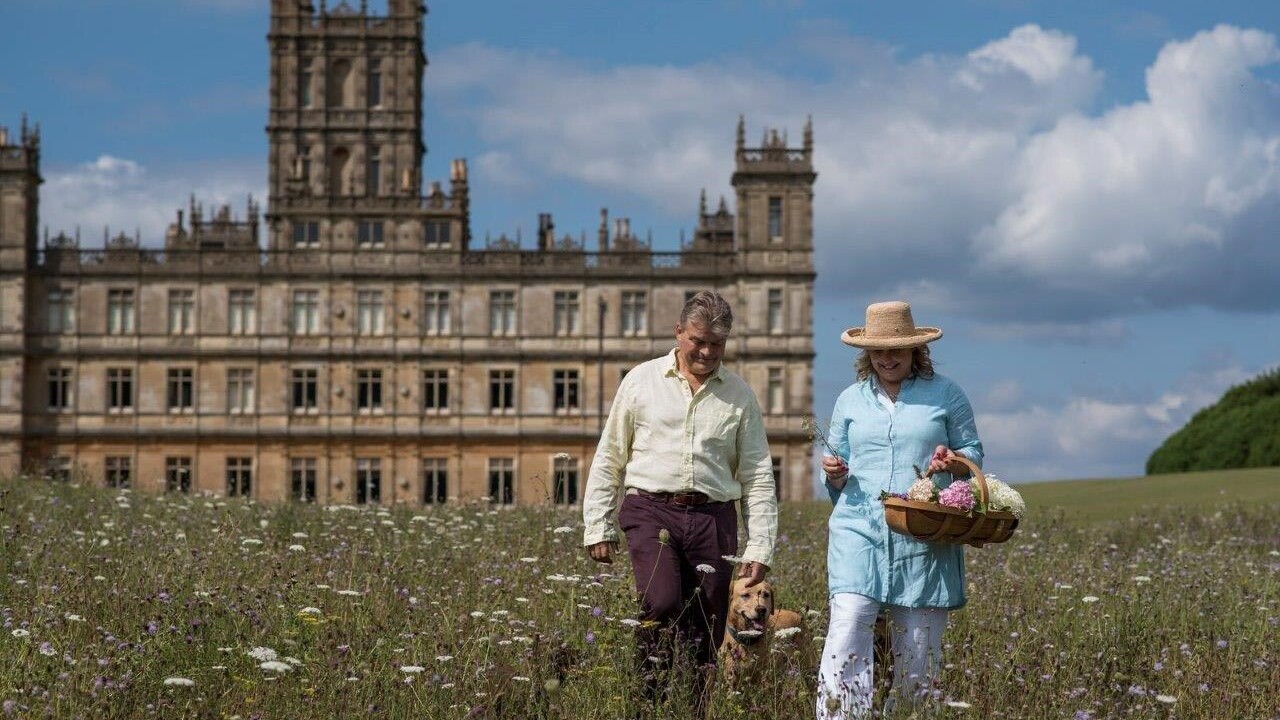
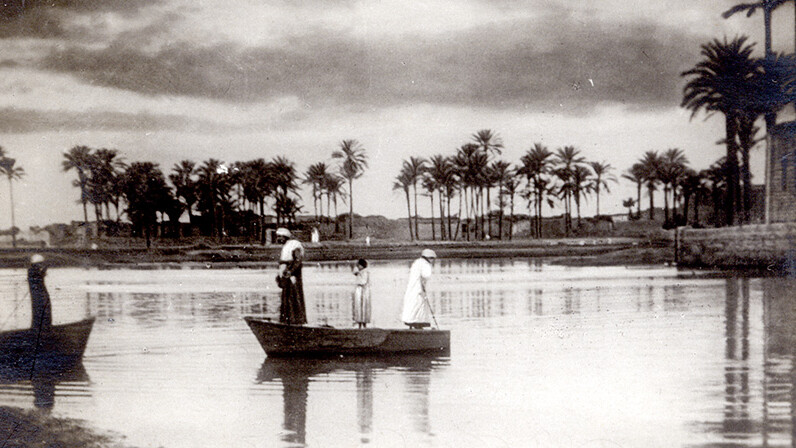
- Christmas
- Community
- Dogs & Horses
- Egypt & Tutankhamun
- Entertaining
- Farm
- Filming
- Gardens
- History & Heritage
- Daily Life
- Royalty
- Cooking
- Interiors
- Heroes
- Architecture
- Cars
- Conservation
- Downton Abbey
- Events
- Gardens & Landscape
- Highclere Castle Gin
- History
- Planes
- Restoration
- Stories & Books
- Uncategorized
- Visitors
- Wildlife

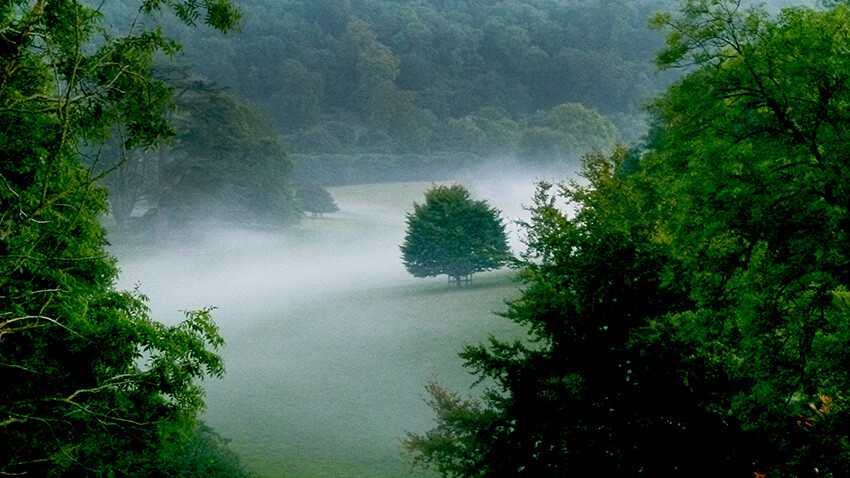
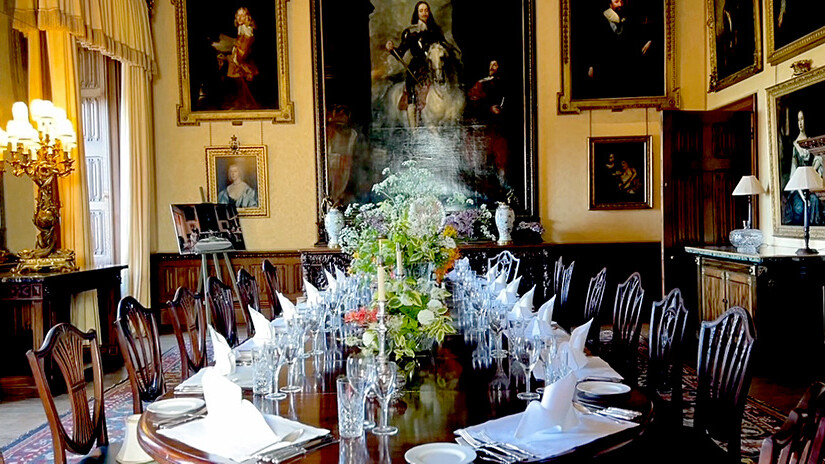
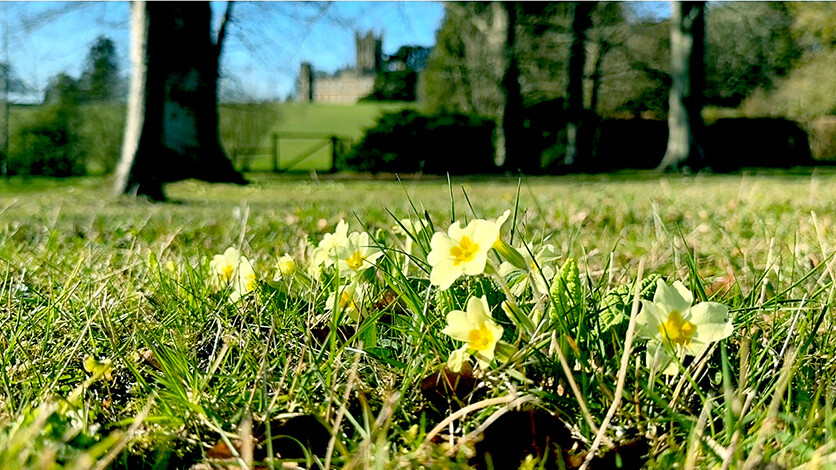
Dear Lady Carnarvon,
What a lovely tale you weave this morning. I was just sending photos of flowers taken in Majorca to my sisters. I enjoyed the aerial view of the manor from overtop of the gardens. We did get to spend time in the gardens when last at Highclere, but I did want to spend more time on our next visit. Maybe 2 days visiting would do it. Thank you for making your part of the world more lovely and for taking your valuable time to share it with us.
And to think Violet Crawley once called gardening a "desperate" pursuit. What you've done with the grounds sounds lovely. I hope I can visit the next time I come to the UK.